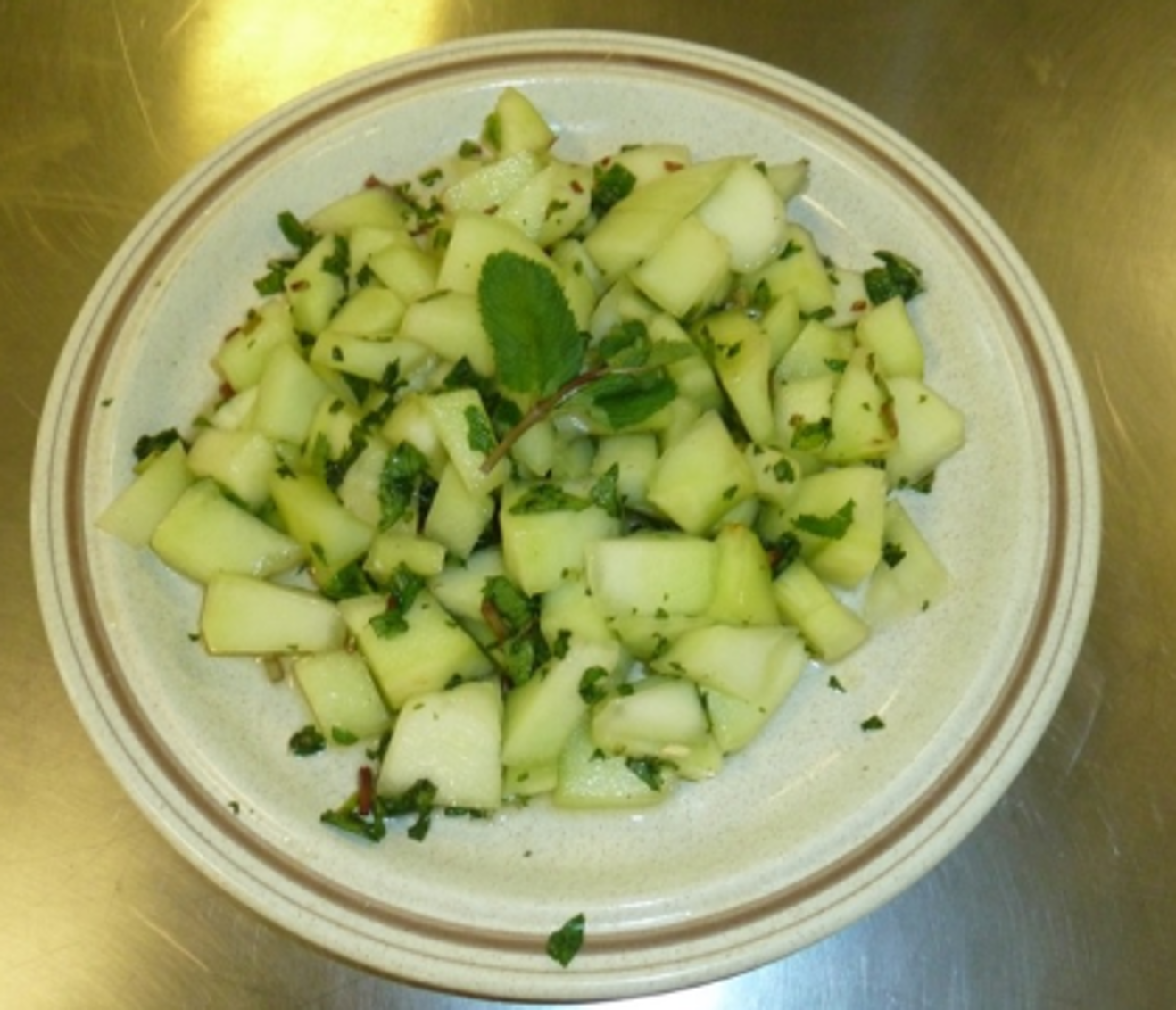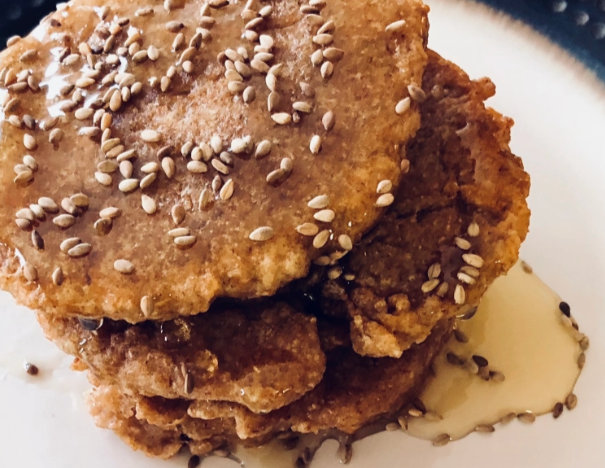Recipes
Some of the recipes we offer - try them at home!

Moretum (herb cheese spread)
From: Poem Moretum 88-120, often attributed to Virgil
• 2 heads (20–25 cloves!) garlic
• 225g Pecorino Romano cheese
• 1 large handful of coriander leaves
• 2 heaped teaspoons chopped fresh celery leaf
• 1 tsp salt
• 1 tbsp white wine vinegar
• 1 tbsp olive oil
Method
Peel and roughly chop the garlic. Grate the cheese. Roughly chop the herbs. If you are grinding by hand, start with the garlic and salt; break it down to a pulp, then add the cheese and herbs. When you have a smooth mixture add the liquids and mix well. If you are using a food processor, add all the solid ingredients and process until the mixture is smooth in texture, then add the liquids. Gather the mixture together and chill. Serve with a crusty loaf as a snack.

Olive Relish
From: The Classical Cookbook, pp. 42-43 - original source - Cato, On Agriculture 119
• 120g black olives
• 120g green olives
• 4 tbsp red wine vinegar
• 4 tbsp olive oil
• 1 heaped tsp chopped fennel leaf or finely diced fennel root
• 1/2 level tsp ground cumin (optional)
• 2 tsp chopped fresh coriander
• 2 tsp dried or chopped fresh rue (you can use a bitter herb or spice such as fenugreek seed as a substitute)
• 2 heaped tsp dried or 3 tsp chopped fresh mint
Method
Chop the olives roughly and pour on the vinegar and olive oil. Prepare the herbs, chopping them finely if fresh, and add to the mixture. Place the olive relish in a sealable container and pour a little olive oil over the top. At this stage it can be eaten, as Cato firmly says, but it does improve with a few days' marinating. Try it with pitta bread, accompanied by a sharp sheep's cheese such as feta.
Can be kept in fridge for 2 days but probably best eaten either on the day or the following day.

Dressed Melon
From: Apicius
- 1 Honeydew melon
- 3 tsp of chopped fresh mint
- A pinch of black pepper
- 2 dessertspoons of honey
- 2 dessertspoons of apple cider vinegar.
Method
Cut the melon into wedges, remove the rind and then dice into small (5—10mm) pieces. Put in a shallow dish. Combine the mint, honey and vinegar in a bowl and whisk. Pour over the melon and leave for 15 minutes to marinate.

*Greek Honey Pancakes
From: Galen
- 1 cup plain flour,
- 1 cup water
- 1 tablespoon honey
- 1 teaspoon of sunflower oil
* Ok, so these are Greek and not strictly Roman, but the Romans loved everything Greek and no doubt loved their honey pancakes as well.
Method
Heat the oil in a pan. Combine the ingredients in a bowl and pour some of the mixture in a frying pan. Fry until golden brown.

Roman Army Bread
- 500g spelt flour,
- 1 sachet instant yeast
- 300ml warm water
- 2 tbs olive oil
- 1 tsp sea salt
- 2 tsp crushed coriander seeds or 2 tbs poppy seeds (optional).
(This goes really well with the olive relish!)
Method
Mix the flour, yeast, seeds and salt, then add oil and enough water to make a soft dough. Knead until smooth. Shape into a disc about 25 cm across and place on an oiled baking sheet. Cover with a damp cloth and leave to rise in a warm place for an hour. Bake at Gas mark 6, 200C/400F for 20-30 minutes.
.
Roman Biscuits
Recipe from Museum of East Dorset
- 200g self-raising flour
- 1/4 teaspoon salt
- 55g unsalted butter, room temperature
- 85g runny honey
- 2 eggs
- 1 egg white
- castor sugar to sprinkle (or sesame seeds)
Method
Beat together the honey and butter the add the eggs one at a time making sure you mix very well. Tip the flour and salt into this mixture and bring together to make a dough. Cover the dough bowl with cling film and put it into the fridge until the dough is cold and firmer.
Heat oven to 180 °c. Roll the dough into long Sausages, cut into 3cm sections and curve to form S shapes. Brush with egg white and sprinkle with sugar or sesame seeds. (check for allergens).
Bake on a lined tray in the oven for 7-10 minutes until golden brown then cool on a wire rack

Roman Fig Cake
- 400g figs dried figs
- 1 tablespoon dried coriander seeds
- 1 tablespoon flour
Image above shows fig cake and tiropatinum (recipe to come soon)
Method
Remove stalks from figs, blend in a blender to a paste consistency. Flatten and shape into an oval shape. Mix flour and coriander seeds together and dust onto outside of fig cake. Cut into small wedges to serve.
We have adapted our recipes from a number of excellent sources available, so do check them out and see what other recipes you might want to taste (or not). We would heartliy recommend The Classical Cookbook written by Andrew dalby and Sally Grainger and published by the British Museum. Also, check out these sites:
Cook a classical feast: nine recipes from ancient Greece and Rome | British Museum
MCR-Roman-food-worksheet.pdf (maximumclassics.com)
Teganitai: Ancient Greek Pancakes – A Dollop of History (historydollop.com)
